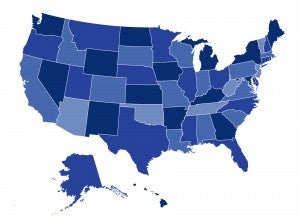Tag: consumer outreach
October Research Roundup: What We’re Reading
State-Based Marketplace Outreach Strategies for Boosting Health Plan Enrollment of the Uninsured

The tenth annual open enrollment period for the Affordable Care Act’s marketplaces is upon us. In a new issue brief for the Commonwealth Fund, CHIR experts Rachel Schwab, Rachel Swindle, and Justin Giovannelli detail innovative outreach strategies employed by state-based marketplaces during the open enrollment period for plan year 2022—tactics that can be applied during the forthcoming enrollment season for plan year 2023.
January Research Roundup: What We’re Reading

In our newest monthly roundup of health policy research, CHIR’s Emma Walsh-Alker reviews studies on the potential of personalized phone outreach to boost marketplace enrollment, trends in the small-group health insurance market, and the Congressional Budget Office’s latest report comparing how much commercial insurers and Medicare pay for health services.
December Research Roundup: What We’re Reading

This month, we’re ringing in the new year with new health policy research. In our final roundup of 2021 publications, CHIR’s Emma Walsh-Alker reviewed analyses about the impact of the ACA’s Medicaid expansion on coverage status and access to maternal care, how the Build Back Better Act would change health insurance for low-income individuals and families, and consumer choice in health care.
State “Easy Enrollment” Programs Gain Momentum, Lay Groundwork for Additional Efforts to Expand Coverage

The American Rescue Plan made health insurance more affordable, but covering the 30 million remaining uninsured will require innovative efforts to broadcast and facilitate enrollment in subsidized insurance. To that end, several states, following an inaugural effort in Maryland, have proposed or are implementing a new avenue to enrollment through the tax-filing process. In a new post for the Commonwealth Fund’s To the Point blog, CHIR experts take a look at states that are operating or implementing “Easy Enrollment” programs, and how they may offer a bridge to more ambitious initiatives like automatic enrollment.
Removing Roadblocks: Special Enrollment Period Data Show Increase in Marketplace Signups

Last month, the Biden administration established a temporary special enrollment period (SEP) on the federal health insurance marketplace in response to the ongoing COVID-19 pandemic. In the first two weeks of the SEP, the federal marketplace saw a rise in enrollment activity, and the expansion of premium subsidies under the American Rescue Plan is expected to generate even greater enrollment increases. CHIR’s Rachel Schwab takes a look at how recent federal actions tap into the Affordable Care Act’s potential and expand its reach.
Many States with COVID-19 Special Enrollment Periods See Increase in Younger Enrollees

President Joe Biden directed his administration to reopen the federal health insurance marketplace, an action the Trump administration refused to take last year after the COVID-19 pandemic struck due to adverse selection concerns. In a new post for the Commonwealth Fund, CHIR experts discuss how states that created a broad special enrollment period (SEP) for the uninsured in response to the pandemic – and broadcast the opportunity through outreach efforts – saw an increase in younger enrollees, seemingly contradicting claims that reducing SEP barriers inevitably leads to adverse selection.
COVID-19 Response: States That Run Their Own ACA Marketplace Are Better Positioned to Help Consumers Get Covered

During the current public health and financial crises brought by the COVID-19 pandemic, the ACA’s health insurance marketplaces offer a crucial safety net. States that run their own marketplaces have a significant advantage in helping consumers obtain comprehensive, affordable health insurance. CHIR’s Rachel Schwab looks at some opportunities for state-based marketplaces that don’t exist for states relying on the federal marketplace.
States Looking to Run Their Own Health Insurance Marketplace See Opportunity for Funding, Flexibility

Last week, Pennsylvania Governor Tom Wolf signed legislation to establish a state-based health insurance marketplace. Recently, along with Pennsylvania, several states have taken steps towards transitioning to their own marketplace and enrollment platform. In their newest post for the Commonwealth Fund’s To the Point blog, CHIR’s Rachel Schwab and JoAnn Volk review the latest state actions to transition to a state-run platform and break down some of the incentives for states to leave the federal marketplace.

